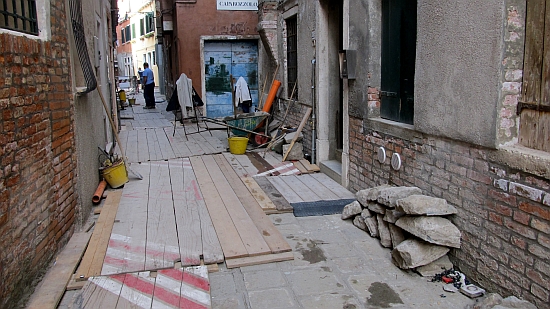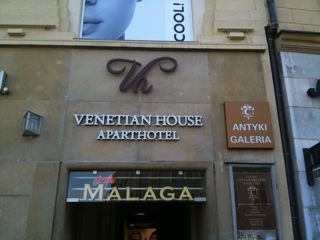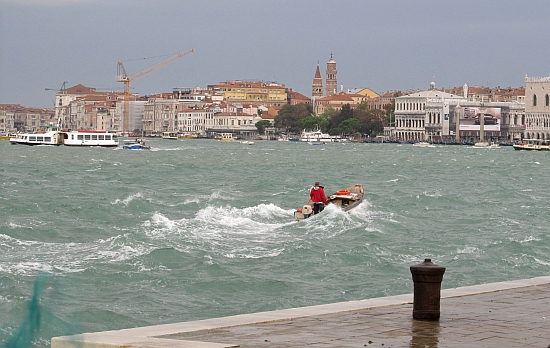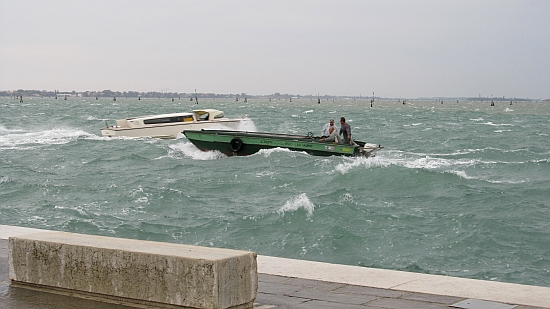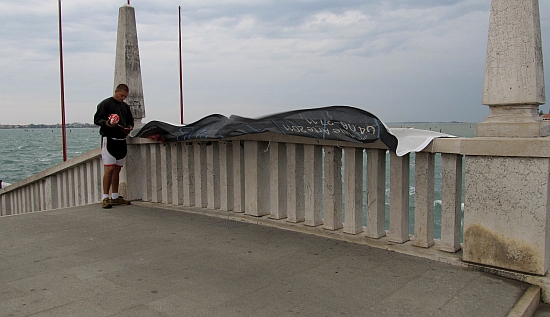It’s been raining since last night and will continue at least past lunchtime, and a spectacular bora has kept the blinds rattling all day. Gusts up to 30 mph (50 k/h). In pipe-replacement-street-tearing-up-crew language this translates as “Day off.”
The silence is eerie. It’s like the silence of the songbirds. I can’t say I miss their racket, in the sense that I wish I were hearing it right now, but it is strangely unsettling.
Yesterday the concert was especially intense. To the usual hammering and clunking and yelling they added sneezing, hawking, spitting, and belching. One of them occasionally even sang a little.
Lino says they must have been feeling the impending drastic change in the weather, like horses before an earthquake.
As if that weren’t good enough, some kind of supervisor came to review their work — I think that’s what he was doing — which provided a bellowing voice louder than theirs. He wasn’t happy about something. I couldn’t understand what, but I gathered that their performance evaluation was being summarized in one particularly ugly phrase which he repeated at least 723 times.
Or maybe he was commenting on the way they had concluded their work on the little street stretching from our front door to the main thoroughfare. It now lists, like a clumsily loaded boat. In fact, the first thing Lino said when we walked down it was: “They could at least have made it level.”
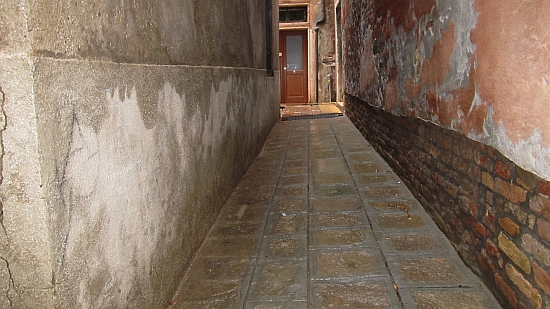
So now when we leave the house, we list to starboard, and coming home, we list to port. What is unfortunate is that it slopes toward our hovel, meaning the rainwater will slide toward our foundations, if we have any. There are two drains, which is good, and after all, I realize that rainwater shouldn’t be sliding away from them. So all I have to do is keep them unclogged. Since nobody else does.
Does the quality of life in every city come down to drains?

